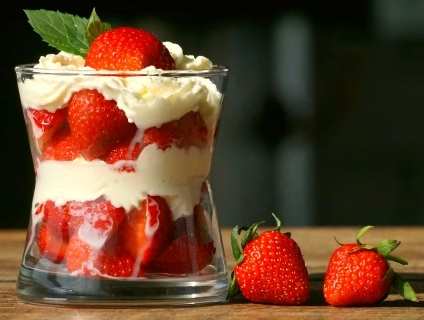Nature offers so many amazingly colorful foods, each a nutrient in its own right. Wouldn’t it be a shame not to utilize them? Leftover fruits and vegetables can be dried, ground, or juiced and concentrated into liquids to add a beautiful touch to food.
Natural pigments have flavor.
Natural colors from fruits and vegetables, because they come from real food ingredients, retain their flavor, whether in powder or liquid form. However, natural pigments generally make up a small portion of the overall recipe, so their flavor is diluted by other ingredients, making their original flavor less prominent.
Accept the instability of natural pigments.
Natural pigments are unstable and easily affected by oxidation, light, temperature, pH, and other interactions with other materials. They may fade or change color after being left out for several days, affecting their coloring effect.
Using natural pigments is challenging. Each batch of fruits and vegetables can have subtle variations, and each finished product may not be exactly the same.
Natural pigments offer a softer hue, unlike the intense tones of chemically derived synthetic pigments.
When natural pigments are added to other ingredients, such as flour or water, it’s normal for their original vibrant colors to become diluted and faded.
Fruits and vegetables containing anthocyanins are very heat-sensitive, and their colors may darken and lose their vibrant color after heating.
Powdered vs. Liquid Natural Color Preparation and Storage
Liquid natural pigments contain water and should not be stored for long periods of time. They should be used immediately after preparation.
Natural pigment powders are extremely dry products, making it difficult for bacteria and mold to grow without moisture. They do not require preservatives and can be stored at room temperature for 2-3 months. Store in a sealed container with a moisture-proof bag to prevent clumping.
Natural pigments can be obtained from the roots, stems, flowers, leaves, and fruits of various plants. Fruit or vegetable juices are relatively easy to obtain as liquid natural pigments, but not all produce the desired coloring effect.
Except for matcha powder and cocoa powder, the preparation process is complex and cannot be made at home. Most fruits and vegetables can be dehydrated to make powders. Dehydrated and ground high-sugar fruits are more susceptible to moisture, causing the powder to clump easily.
Leafy vegetables and fruits are dried, dehydrated, and ground into powdered pigments. Starchy root vegetables are easier to grind into powder by first steaming, mashing, and then grinding.
Vacuum Freeze Drying Technology
A freeze dryer pre-freezes water-containing food and then sublimates the water under vacuum to dry it. Freeze-dried items are easy to store for a long time. Adding water restores them to their pre-freeze-dried state, retaining their original properties. This drying method, unlike hot air drying, preserves the color of the food better.
Freeze drying is expensive and not widely used in household appliances. Some fruits and vegetables labeled “Freeze-Dried” are dried and dehydrated using this method.
Using Natural Colors in desserts
For recipes that cannot contain liquids, such as cookies and macarons, only dry, dehydrated natural powders should be used. Powders have a slow penetration rate, so after mixing with flour or starch, let them sit for about 5-10 minutes for the color to better penetrate the dough.
Cocoa powder, coffee powder, tea leaves, dried flowers, and spices are already in powder form and can be used directly.
Blending fruit directly into juice will dilute the color and weaken the dyeing effect. Blanch leafy vegetables first, then blend them with water to make vegetable juice.
Most dry powders are soluble in water or liquid ingredients.
Adding powders to meringue may cause lumps, so filter through a sieve before adding.
Common Natural Colors
Red
Strawberry Powder: Strawberries get their vibrant color from anthocyanidins such as cyanidins and geranium pigments. However, they oxidize easily, so use them quickly after preparation. A freeze-dried strawberry powder is available that retains the strawberry’s vibrant red color and provides a better dyeing effect.
Yellow
Pumpkin Powder: Contains beta-carotene and is lighter in color than carrot powder. Pumpkin powder has a more palatable flavor and is suitable for sweet desserts.
Green
Matcha powder: The natural chlorophyll it contains is generally not heat-resistant, so fading or darkening during the baking process is normal. Gyokuro tea, specifically made for matcha, is extremely expensive, and matcha produced in Kyoto, Japan, is of higher quality. Greener isn’t always better. Cheap “matcha powder” or “matcha flavor powder” purchased from baking supplies stores may contain the artificial colorant copper chlorophyll.


Leave a Reply